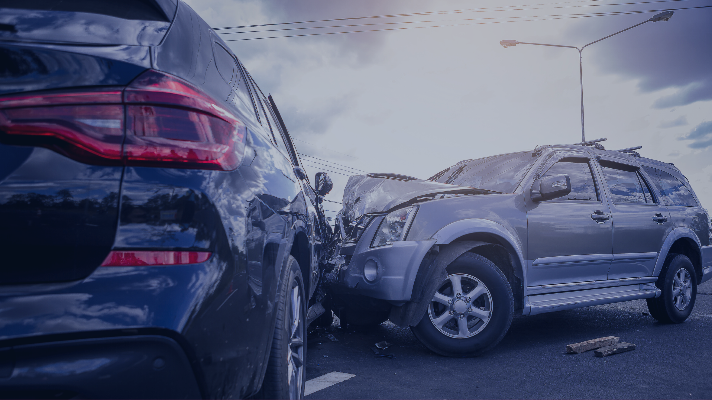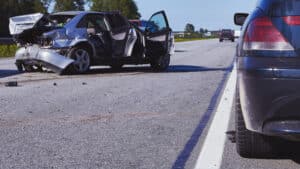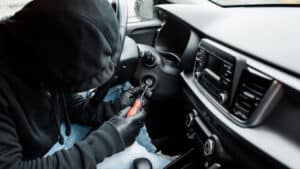Written By Christopher B. Dolan and Allison Stone
This week’s question comes from Remi P. from the Bay Area: During my commute to work I sometimes see people involved in car accidents. I hope it’s never me, but how should I prepare myself if I’m ever involved in a car accident?
Thank you for your question and reaching out, Remi. Being involved in an accident can be scary, stressful, and overwhelming. It is important to do your best to stay calm and remember the following tips:
Make sure you are safe:
The priority is always your safety. Only exit your vehicle if is it is safe to do so. If you are in the middle of a lane or intersection, turn on your hazard lights to alert other drivers to slow down.
Call the police:
Regardless of whether it is a major or minor accident, report it and have the accident documented and a report created.
The police will come to the scene to help make sure the parties exchange information and will make an official report. Even if you think the accident is minor, reporting the accident to the police ensures a record is created, which often provides key evidence in a personal injury claim.
Keep in mind that in some areas and instances, officers may not respond to a minor collision. In the situation where an officer does come to the scene, usually the officer will provide you with an information card which contains what you will need to obtain the report. But regardless, always make sure to get the officer’s name, badge number and contact information including what department s/he works for (police department, sheriff’s department, etc.), and if there is a report number.
Obtain contact information from all drivers:
Get all identifying information, including names, addresses, telephone numbers, email addresses, driver’s license numbers and insurance information for any driver involved in the collision. If the collision involves multiple vehicles, obtain all the above information from each driver.
In addition, get all the vehicle information including the year, make and model, color, license plate number and vehicle identification number (VIN) for each vehicle involved. Get the driver’s insurance company’s name, the insurance policy number and the insurance company’s phone number.
Ask for physical copies of the driver’s registration and VIN number to ensure accuracy. You can simply take photos of the documents with your phone to make the process of collecting this information easier. If the driver’s name does not match up with the vehicle’s registration or insurance, ask the driver what their relationship is to the vehicle’s owner.
Obtain contact information for all passengers and witnesses:
Be sure to get all identifying information, including names, addresses, phone numbers and email addresses of any witnesses, as well as other passengers in any vehicles involved in the collision. These individuals will often have important information that you are not aware of. See if any witnesses will provide you with details about what they saw and heard before they leave the scene.
Take photos to document the scene:
Use your cell phone camera to take pictures and video of the scene. This includes taking multiple photos of your vehicle, the other vehicle(s), the scene, any traffic lights or street signs, visual obstacles, skid marks, broken glass, and other items on the roadway. Do your best to photograph everything from multiple angles. Get photos that show the position of the vehicles relative to each other and relative to the street/freeway. This is necessary so a person who was not at the scene can look at the photos and understand what occurred, and how the vehicles came to their point of rest, and re-create the collision if need be. Also, photograph any visible physical injuries such as bruising, cuts, abrasions, bleeding, etc.
Avoid discussing fault:
Regardless of how the accident happened, you should refrain from apologizing or admitting fault for the collision. The insurance company and/or lawyers will collect multiple statements and documents before they come to a determination of fault. Do not to argue with the other driver. Simply limit communication to exchanging information.
Seek medical attention if needed:
If you were badly injured, call 911 immediately. If someone is taking you to the emergency room before police or paramedics arrive, leave your contact information with someone at the scene.
When the paramedics arrive, let them examine you.
Remember, due to shock and adrenaline, you may not realize you have been injured. It is human nature to say, “I’m ok” or “I’m fine,” but your injuries may not reveal symptoms immediately and injuries can take several days to present themselves. To avoid having your words used against you later, you can say, “I’m shaken up, I do not know if I am injured and will be seeking medical care and treatment if necessary” or something to that effect.
If you do not go straight to the emergency room from the scene, see your own doctor as soon as possible because you may have injuries that become apparent later.
Your health is paramount. Sometimes injuries from accidents can last a lifetime. Your health and medical care should be your priority regardless of who is at fault in an accident.
Document medical and accident-related details:
Keep track of your medical appointments (doctors’ names, their specialty, and visit dates) and medications. Also keep a record of days missed days from work.
Report the Accident to the California Department of Motor Vehicles:
California law requires traffic accident on a California street/highway or private property be reported to the Department of Motor Vehicles using the SR-1 Traffic Accident Report form within 10 days if there was an injury, death, or property damage more than $1,000.
If you were in an accident, do not hesitate to contact us for a free consultation at dolanlawfirm.com










